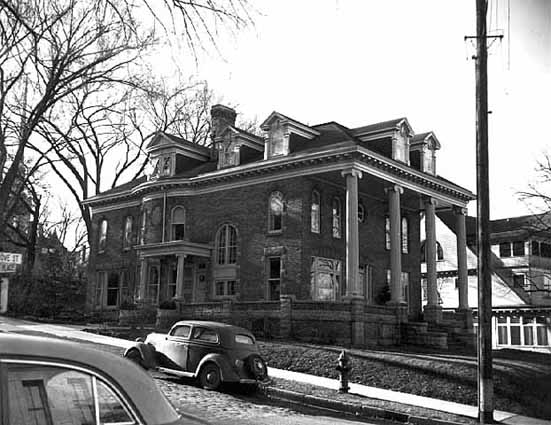
Details
Individual Landmark
Address: 419 Oak Grove Street
Neighborhood: Loring Park
Construction Date: 1892
Contractor: Unknown
Architect: Edward S. Stebbins
Architectural Style: Neoclassical
Historic Use: Private Residence
Current Use: Private Residences (Condominiums)
Date of Local Designation: 2011
Date of National Designation: N/A
Area of Significance: Architecture; Master Architect; Neighborhood Identity
Period of Significance: 1892-1954
Historic profile
Located at the corner of Oak Grove Street and Clifton Place, the Daniel B. Lyon House is a fixture in the Loring Park neighborhood. Designed by Edward S. Stebbins, the Daniel B. Lyon house exemplifies many features of the Neoclassical style of architecture, including a full width front veranda, two-story tall ionic styled columns, a symmetrical front façade with a centered main entry, and modillion course on the eaves and roofline balustrade.
Edward S. Stebbins is widely credited as being the first college educated architect to practice in the City of Minneapolis. His most prominent contributions to the architectural fabric of the City come from his work for the Minneapolis School Board. Stebbins was appointed the official architect of the School Board in 1898, and served in the post until 1912. During his tenure as official architect, Stebbins was involved in the design of several of the most notable schools in the city, including the Pratt (1898), West (1906, razed 1984), Willard (1910) and Barton (1912) schools. In addition to his work for the Minneapolis School Board, Stebbins designed a number of other notable structures in Minneapolis, including the Dunn Mansion (337 Oak Grove Street), Gethsemane Episcopal Church (901 4th Avenue S) and the “Mary Tyler Moore House” (2104 Kenwood Parkway).
The Daniel B. Lyon House is one of the few remaining examples of the ornate single-family residences that once lined Oak Grove Street. It is part of a grouping of three such houses that remain near the western edge of the neighborhood. These remaining mansions serve as a tangible reminder of the time when the area around Loring Park was one of the most fashionable places for wealthy and prominent Minneapolitans to live.
Photo credits
1949, Minnesota Historical Society
2012, CPED Staff

